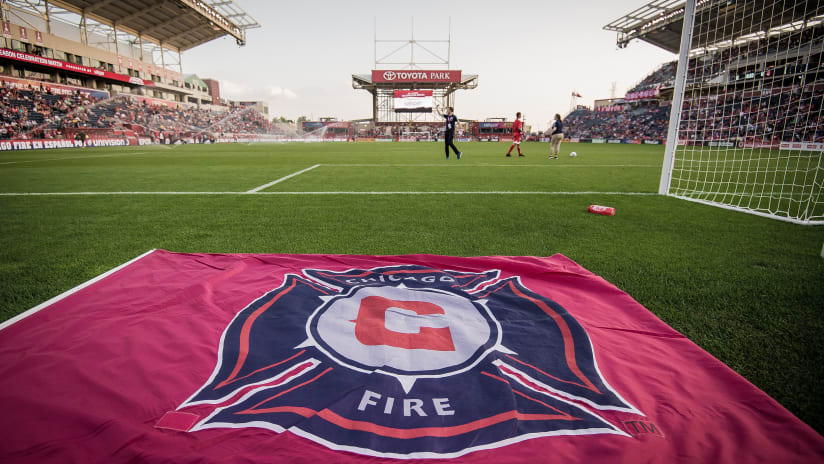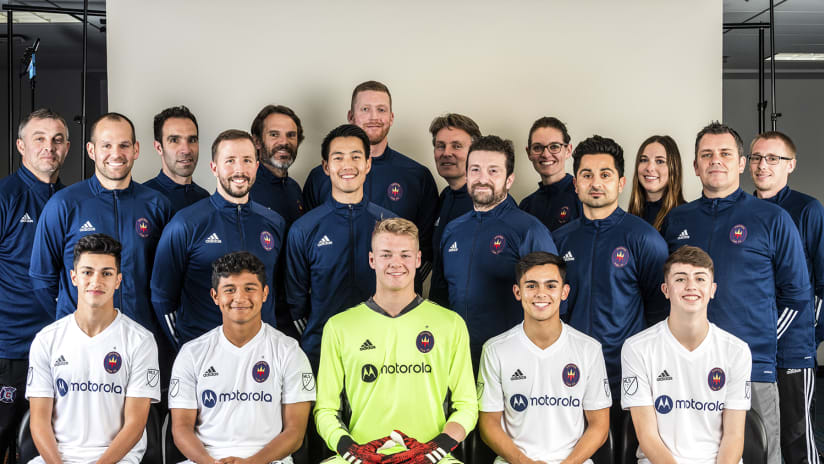As a national soccer writer, Graham Parker has covered US soccer culture for The New York Times, The Guardian, ESPN, The Wall Street Journal, Grantland, Al Jazeera America, Vice, FourFourTwo, Howler and numerous other print, web, tv and radio outlets in the U.S. and Europe. He has attended World Cup finals and games where the teams outnumber spectators. Now Graham has joined the Chicago Fire as Senior Director, Strategy and Special Projects, to help write the next chapter in our story.
--
Welcome to the Fire Inside. This will be a regular column exploring the lives of the players, coaches, staff and fans who make up the Chicago Fire community. It’s also a celebration of the city of Chicago itself and our relationship to that city.
It’s important you know who’s talking, as we get started. My name is Graham Parker. I’m new here. Not just new to the city, but new to this position of letting the fan in me edge past the journalist in me. I’ve been thinking for a long time about how and where I want to use my voice in building and celebrating something, and when Chicago Fire offered me the opportunity to not only write, but to help think strategically and creatively about what the future of the Club could look like, I knew it was the only job I wanted to do.
And I wanted to start by describing the moment I first became a fan. Because most of what you might ever want to know about me is contained in that moment.
I’m nine years old, and my dad has brought me to my first professional soccer game, at Sunderland’s crumbling Roker Park stadium, after a period of begging that probably goes back a few months, but has felt like years. Having ascended the stadium steps and taken in that first glimpse of green (a view that is still magic to me, decades later), I have issued him the first warning sign by immediately diverting my attention away from the field. I am now watching the teenagers standing behind the Fulwell End of Roker Park. They’re insolent, funny, raucous and faintly dangerous looking, and — despite the best efforts of the Sunderland and Ipswich teams kicking lumps out of each other on the most churned up mudbath late-1970s England can muster, right in front of them — they look deliriously happy to be there, with their team and with each other.
“I want to stand there!”
My dad, who has brought me here as “something to do with the boy” and who has had to call in a favor from a trade union colleague to secure us very nice tickets in the rather more sedate Clock Stand, looks at me mildly askance, possibly reconsidering his decision not to encourage an interest in solo long-distance running instead. But already it’s too late. Without checking the small print on what a team can do to your heart and your nerves over the course of a few decades, I’m already a fan. And that fan wants to be an even bigger fan…
…fast forward nearly four decades and I’m on the other side of the world, watching the Chicago Fire train, when it happens again. It starts innocuously enough. I’m watching a short-sided game in the inflated training bubble across from the stadium. I’ve watched many of these sessions and players frequently over the years, while writing for any number of the outlets I’ve been lucky enough to cover the sport for. Often I’ve stood around waiting for training sessions to finish, waiting for a few words from such and such a player, or coach, about what went wrong last week, or what explains this winning streak, or to help tease out one of the human interest storylines of professional soccer with a few quotes. They’re sessions that tend to blur into each other.
It’s not that you get blasé about these interactions as a writer, it’s just that the job isn’t made for being a fan. There’s professional objectivity to maintain and following the story is a necessarily agnostic business. You might enjoy the company of certain players or coaches, might even enjoy the run a local team goes on when it makes for a good sustained storyline, but the sheer abandonment of entrusting your heart and your passions to the relative strangers on the field is for others. Where the fan sees a thrilling multi-goal climax to a game as a life affirming/destroying maelstrom of emotions, the writer takes a perverse pride in being annoyed at having to rewrite their whole story to file on the whistle. We witness great games, and write the first drafts of the folk history of those games, but we’re at a curious remove from the emotions that gives those games meaning for other witnesses.
…and then, in a nondescript training game on my first day of work, it happens. Basti switches the ball outside, and I notice Jorge Corrales setting off on a sprint up the wing. “Get up, Jorge!” yells an unseen member of the coaching staff, and Corrales is off into space, and…I’m feeling absurd, but I know this game, and I know its rhythms and I know how I respond to seeing a chance even if I’m watching a pickup game in the park. My heart is beating a little quicker, and now he’s crossing and my back tenses, and before I can stop myself I’ve given a little involuntary header movement, like my mime on the sidelines can somehow alert the attacker to finish.
He does. I don’t see who, because I’ve turned away a little embarrassed in case someone noticed me caring like that. But I do. Already. Because I’m a fan, and I’ve missed being a fan. I’ve missed being implicated in the fortunes of a team, and I know that so much of the joy of watching this sport is that mix of helplessness and superstitious belief that your presence actually matters, actually activates something. And in that instance I know I’m going to care about these players and this team in a way that I have missed.
After the USA missed out on World Cup qualification, I found myself asking myself a lot of variations on my then ESPN colleague Taylor Twellman’s infamous cry of “What are we doing!? What. Are. We. Doing!?” And as I covered the fallout from that event, and wrote about those attempting to answer similar questions, and as the media I worked for fell under some of that same scrutiny, I felt that the query grew more — and not less — urgent. I felt that a moment in American soccer history was passing — an evangelical period when players, administrators, fans and yes, the media, were engaged in a sometimes unspoken pact to “grow the game”, and that the game, whatever it was now, no longer needed its hand held in the same way.
I knew I still wanted to tell stories, but the critical stories that will be necessary in our future would need to stand among the stories we tell ourselves to keep going, to inspire ourselves, to remind ourselves why we build. And in Chicago, the first, best expansion team, in the city that anchors the center of the country, with grit, heart, kindness and more than a little swagger, you couldn’t hope for a better inspiration.
I can picture my former editors wincing: “Tone it down, Graham. Focus on the facts.” They’re right, of course. Those are important guidelines for journalists. And in future columns you’ll hear more from other voices and less from mine.
But you need to know who’s speaking to them, and the fact is I’m a fan. I want to stand here.







